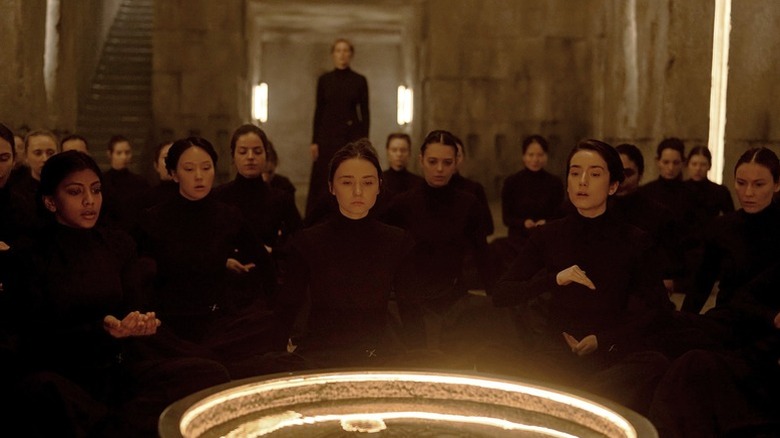
The “Dune” books are incredibly dense and full of rich detail, with an expansive world-building that provides context that makes Paul Atreides’ rise to power fascinating and inevitable. Frank Herbert’s novel was also full of insight into biology, religion, and history. On the surface, the story of the first book is an entertaining coming-of-age story of a young boy becoming a leader and overthrowing a tyrant with the help of a band of rebels. Except that is but a fraction of the story of “Dune,” a story that spans tens of thousands of years.
Much like “Lord of the Rings,” no single adaptation of “Dune” has truly been able to include all that made the book and universe special given how much ground there is to cover. Indeed, every adaptation has focused on something different, making every journey to Arrakis unique and worth watching. For instance, David Lynch’s version includes the Weirding Way and the Guild Navigators, while Denis Villeneuve’s version erases both. Likewise, the Villeneuve version all but erases the role of the Mentats in order to put a heavier focus on the Bene Gesserit.
Villeneuve seems fascinated with the Bene Gesserit, not so much their martial arts skills, but in their genetic experimentation and religious engineering — like making the Missionaria Protectiva a huge part of “Dune: Part Two” — and overall manipulation schemes across the universe. The Bene Gesserit are a big enough part of Warner Bros.’ “Dune” universe to warrant their own spin-off prequel that tells their origin, answering questions not even the books give answers to.
One such question that the prequel series “Dune: Prophecy” seems to be answering is the true origin of the Litany Against Fear, from which the mantra “fear is the mind-killer” originates, arguably one of the most memorable quotes of the original novel.
The origin of the Litany Against Fear
The Litany Against Fear is the mantra Paul Atreides repeats to himself while trying to survive the Gom Jabbar test. A Bene Gesserit mantra, Paul learns about it from Jessica, who repeats the litany several times throughout the two “Dune” movies. It is a mantra central to the idea of the Bene Gesserit order, an idea all about the power of the mind over matter, being able to even control our most basic, animalistic instinct with just our mind. It’s a cool mantra, but one that gains a more literal meaning in the new TV show.
“Dune Prophecy” has already taken steps to clarify or explain parts of the films that didn’t get much attention, like the Water of Life ceremony. When it comes to the Litany of Fear, the spin-off makes “Fear is the mind-killer” a rather literal statement. In the show, we learn of a man named Desmond Hart who has a great power, one that can burn people from the inside out with a mere look from Hart. Turns out, he got his powers after surviving a sandworm attack on Arrakis, after which he had nanotech implanted in his eye with the use of forbidden thinking machines by an unknown person (or machine).
The nanotech implant activates a bioengineered virus, one that concentrates in a person’s amygdala — the fear center of the brain — and causes a chain reaction that becomes stronger the move a person fights back against the terrifying visions caused by the virus. In other words, the infected die of fear. The Bene Gesserit, capable of literally altering their body’s chemical compositions to fight viruses and poisons, are unable to fight the virus. That is until Reverend Mother Superior Valya Harkonnen beats the virus by facing the fear caused by the virus, letting it pass over her and through her until it’s gone.
Whether making “I will face my fear and I will permit it to pass over me and through me” literal is a good choice or not, it is at least interesting to see “Dune: Prophecy,” and thereby Denis Villeneuve’s “Dune” world, expand his take on Herbert’s universe by showing the long and painful history that eventually led to Paul’s rise.



Leave a Reply